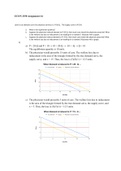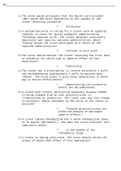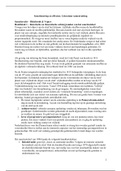Samenvatting
Collective violence summary, lecture notes and literature
- Instelling
- Universiteit Leiden (UL)
In this summary, all lectures are summarized in a convenient way. At the end of each lecture there is a summary of all the readings that went with that lecture. It's for the course Collective Violence in the minor Violence Studies at the University of Leiden
[Meer zien]













